Hello, Bob Easton here…
I have the pleasure of being one of Mary’s students, of having helped set up her online woodcarving school, and of having become acquainted with many of you, both through her classes and her websites. Today, I have the pleasure being a guest on her blog and writing this article. THANK YOU, Mary.
Who is this Gibbons guy?
It’s all Mary’s fault.
I don’t know if she does it frequently, but while I was in one of her classes she mentioned several styles of carving and some of the practitioners of those styles. I hadn’t heard of Grinling Gibbons and did what most of us might do, went to Google.
Oh My! <<<< click to be impressed … then, come back.
The baroque style of interior decoration died a long time ago. There’s none in my house, and I don’t ever anticipate trying to do much baroque carving. It’s not the style, but the absolute virtuosity that left me wanting to see more of Gibbons’ work.
Grinling Gibbons is a woodcarver of the late 1600s who worked in London. He carved palace decorations for royalty, as well as for churches and country houses. He took a fairly common format, the baroque three-piece surround, and raised it to a level of beauty and perfection never before achieved. Surrounds were used as extra framing elements around very large pictures and over mantels. A “surround” was made up of a horizontal piece, or “crest,” and of two vertical pieces or “drops.” While other carvers carved flowers and ribbons in their surrounds, Gibbons added fruits, vegetables, game animals, hunting trophies, fabric (i.e. linenfold) and even putti.
What does his work really look like? How was it created? I found photos of Gibbons’ work online and in books, but not enough to satisfy. Many photos were very small, especially in books, and there were very few detailed closeup shots. I wanted to see more. My wife and I had talked of visiting London, but put it off because we didn’t find the “Royal Theme Park” tours appealing. Seeing more of Gibbons’ work gave us a reason to go. She did all the travel planning work. I went along and took as many pictures as I could. To avoid driving on the wrong side of the road, we kept ourselves to central London, used the underground, buses, and trains, and had a fabulous time. Of course, we didn’t see all of Gibbons’ work, but enough to sate my curiosity. …for now…
Two things I learned:
HIGH relief is really, really, really high.
Mary’s style of classical carving shows us how to carve in low relief, sometimes in very low relief such as the McIntire Fruit Basket, and occasionally higher, such as the Fleur-de-Lis, Highboy Cartouche, or Dragon. I’ve become accustomed to seeing those styles through Mary’s school and by learning about American Period furniture decoration. Then, I came across the photos of Gibbons’ carvings. Photos are always two-dimensional and don’t represent depth at all. I knew that Gibbons’ forms were deeper / thicker / higher relief than I’ve seen before, but I had no sense how high.
Wow, was I surprised. They are stunning! Some of the carvings stand out 10-12 inches from their backgrounds, and they are open and airy, as well. Gibbons’ predecessors also carved high relief, but a cluster of their flowers is tight, dense and full, very little space, or air, between flowers. Those dense clusters were carved from a solid block of wood, the way many of us work in low relief.
What makes Gibbons’ carvings distinct is the open appearance he achieved: large flowers floating in front of other leaves and stems, thin leaves and buds floating in front of other background material. Yes, some of this can be done by careful piercing and delicate undercutting. But, much of it needed very radical undercutting (oops, broke something) and was achieved by carving the face of an object and then flipping it over and carving the back, and by building up layers. None of the places I visited would let me take their carvings apart. 🙂 So, I learned about the layering technique by reading David Esterly’s books. He is today’s expert on Gibbons and helped restore the Gibbons carvings that were damaged in a fire at Hampton Court Palace in the late 1980s. He has a couple of postage-stamp sized illustrations about layers in each of his books.
Each of the putti is an individual.
We’ve seen classic putti everywhere, and they all seem alike. Their facial shape, expressions, and even curly locks of hair seem universally common. Not so with Gibbons’ putti.
Mary says Gibbons’ putti “creep me out.” I think there are two reasons for that. First, none of the eyes have inner details such as irises or pupils. Second, they are remarkably varied.
Yeah, it’s boring carving the exact same thing over and over … nearly 60 of them at St. Paul’s Cathedral. I’ve heard two stories. One suggests that the putti are images of Gibbons’ own children; he and wife Elizabeth had 10 children. Another story suggests that everyday on his walk to work, along the street he would seek out and remember a child’s face and make that face his putto carving for the day. No matter what the truth, the expressions on Gibbons’ puttu differ distinctly from one to the next. These aren’t your common classic putti. … and maybe some of the models actually were mischievous and creepy.
- photo: Bob Easton
- photo courtesy of: Chapter House, St. Paul’s Cathedral, London
- photo: Bob Easton
- photo courtesy of: Chapter House, St. Paul’s Cathedral, London
- photo: Bob Easton
- photo courtesy of: Chapter House, St. Paul’s Cathedral, London
See more…
I’m writing more articles about Gibbons on my own blog. I have an article for each of the locations we visited. See them all here.
Oh, by the way…
We’re all proud of carving “by hand,” right!? I remember Mary once talking about doing demos at a woodworking show and the guy in the booth next to hers was using a CNC machine. He challenged her to a carving race, as though speed is the only thing that matters. 🙂
Well, it turns out that machine carving started a very long time ago. I learned at the Victoria and Albert museum about some of the first machine carved furniture pieces. A pair of carved legs caught my eye. No, they are not part of Gibbons’ work. The legs were simply near one of Gibbons’ pieces in the museum’s furniture room. A carving machine in Thomas Jordan’s workshop carved these legs two at a time in 1848. A few years later he had a machine that would carve 8 at a time.

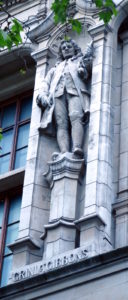
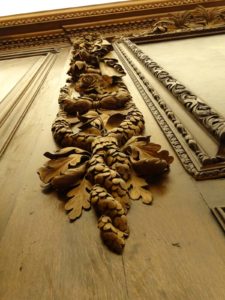
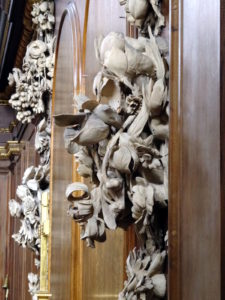
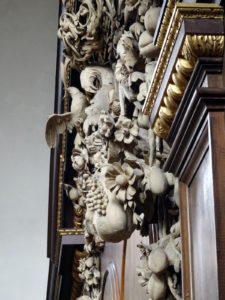

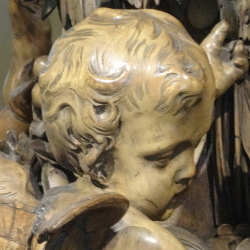
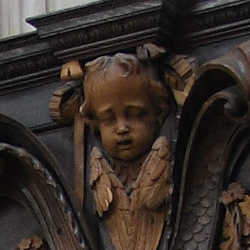
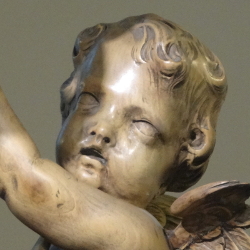
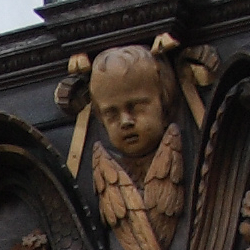
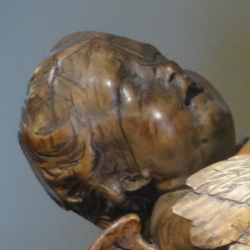
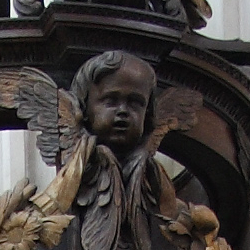
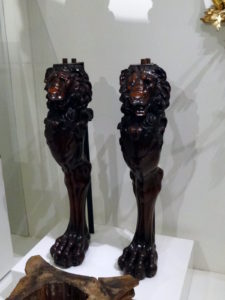
A very nice ‘tour’!
Well done Bob
And a good idea (in my opinion) for this ‘guest post’!